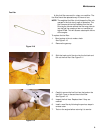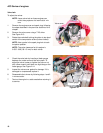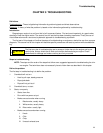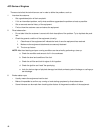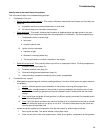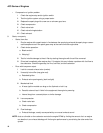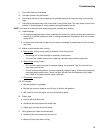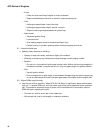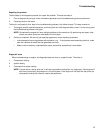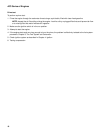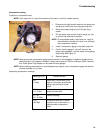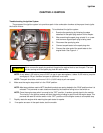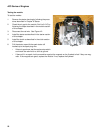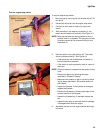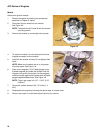Troubleshooting
17
Repairing the problem
The third step in the diagnostic process is to repair the problem. This step consists of:
1. Form a diagnosis by using all of the information gathered from the troubleshooting that was performed.
2. Physically perform the repair.
The fourth, and hopefully final, step in the troubleshooting process is the follow through. This step consists of:
1. Thoroughly test the repaired equipment: confirming that the initial diagnosis was correct. If it was wrong, start
the troubleshooting process over again.
NOTE: Sometimes the engine will have multiple problems at the same time. By performing one repair, other
issues may show up that are unrelated to the first repair.
2. Delivery to customer: We are not just repairing equipment, we are repairing customers.
• Inoculate against recurring problem with education, e.g.... if the problem was caused by stale fuel, make
sure the customer is aware that fuel goes bad over time.
• Make sure the customer understands the repair, preventing “superstitious” come-backs.
Diagnostic tests
When troubleshooting an engine, the diagnostic tests are done in a specific order. The order is:
1. Compression testing
2. Ignition testing
3. Carburetor/fuel system testing.
NOTE: A prime test is a handy short cut. It will test compression and ignition in a single step. If the engine will
start from a prime test, the problem is in the fuel system. If the engine will not start with the prime, the
compression and ignition tests will need to be performed.



